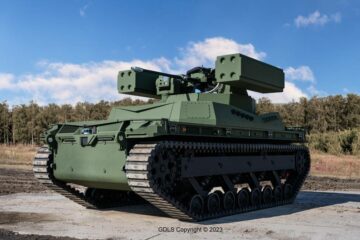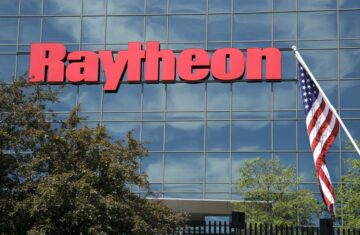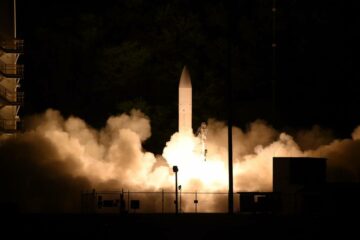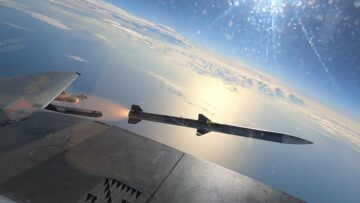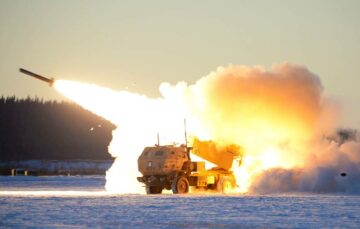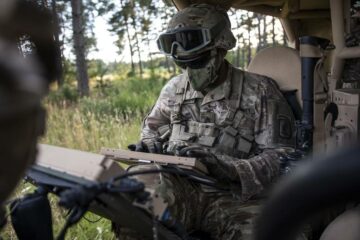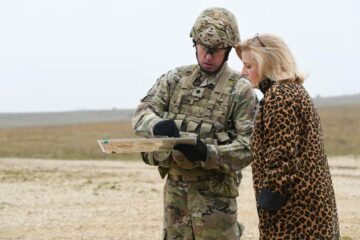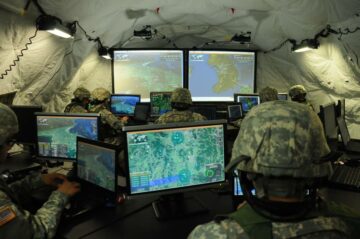Northrop Grumman said it successfully tested software that can receive, share and tailor data on handheld devices used by U.S. troops without the need to link to a cloud server miles away from the battlefield.
Testing of the “combat edge software” involved Link 16 data, the Virginia-based company said in an announcement Feb. 21, and represented another step toward realizing the Pentagon’s Combined Joint All-Domain Command and Control vision.
The CJADC2 campaign aims to connect disparate databases and forces across land, air, sea, space and cyber, enabling the best-positioned and best-armed force to strike first. Future adversaries will attempt to disrupt those links. Northrop’s software accounts for that as well as what troops actually need in the field.
“We’ve come a long way. It is no longer just a question of, ‘Hey, it’s hard to get data somewhere,’” Kevin Berkowitz, Northrop’s vice president of secure processing and networks, told C4ISRNET in an interview. “It’s now about getting the right data somewhere and getting it there quickly, and in a way that’s meaningful for the end user.”
RELATED

“The broadscale data that comes from the cloud server, there’s a place for that, if you look at operations centers and others where they have large systems,” he said. “But we also realize that you have to get data to the end user, the soldier on the battlefield, that takes advantage of all that information that’s there, but isn’t always tied to or dependent on it. They don’t need that overarching infrastructure.”
The software is constructed to cooperate with different waveforms and networks — not just the Link 16 that was tinkered with — and plays well with existing equipment, including products Northrop furnishes.
Berkowitz said it has potential applications across the military, but noted the Air Force and Navy are providing “a lot of pull” initially. Both services operate across vast distances, on the move and in remote areas where connectivity is strained.
“By definition, this is really lightweight. You can put it on devices that take very little power from a physical-energy perspective, from a processing-power perspective,” Berkowitz said.
“The concept is not that we are going to go sell you a box to do ‘combat edge,’” he added. “We have customers that have existing needs.”
Colin Demarest is a reporter at C4ISRNET, where he covers military networks, cyber and IT. Colin previously covered the Department of Energy and its National Nuclear Security Administration — namely Cold War cleanup and nuclear weapons development — for a daily newspaper in South Carolina. Colin is also an award-winning photographer.
- SEO Powered Content & PR Distribution. Get Amplified Today.
- PlatoData.Network Vertical Generative Ai. Empower Yourself. Access Here.
- PlatoAiStream. Web3 Intelligence. Knowledge Amplified. Access Here.
- PlatoESG. Carbon, CleanTech, Energy, Environment, Solar, Waste Management. Access Here.
- PlatoHealth. Biotech and Clinical Trials Intelligence. Access Here.
- Source: https://www.defensenews.com/battlefield-tech/c2-comms/2024/02/21/northrop-combat-edge-software-connects-troops-without-cloud/
- :has
- :is
- :not
- :where
- 1
- 11
- 15%
- 16
- 2024
- 21
- 5
- 70
- 800
- a
- About
- Accounts
- across
- actually
- added
- administration
- ADvantage
- aims
- AIR
- Air Force
- All
- also
- always
- an
- and
- Announcement
- Another
- applications
- ARE
- areas
- AS
- At
- attempt
- award-winning
- away
- Battlefield
- both
- Box
- but
- by
- Campaign
- CAN
- carlos
- Carolina
- Centers
- Cloud
- cloud server
- cold
- come
- comes
- company
- concept
- Conference
- Connect
- Connectivity
- connects
- constructed
- COOPERATE
- covered
- covers
- Customers
- cyber
- daily
- data
- databases
- definition
- del
- Department
- Department of Energy
- dependent
- Development
- Devices
- Diego
- different
- disparate
- Disrupt
- do
- Dont
- Edge
- enabling
- end
- energy
- equipment
- Ether (ETH)
- existing
- false
- Feb
- field
- First
- For
- Force
- Forces
- from
- future
- get
- getting
- Go
- going
- Hard
- Have
- he
- http
- HTTPS
- if
- image
- images
- in
- Including
- information
- Infrastructure
- initially
- involved
- IT
- ITS
- joint
- jpg
- just
- Land
- large
- lightweight
- LINK
- links
- little
- Long
- longer
- Look
- Lot
- meaningful
- Military
- move
- namely
- National
- Need
- needs
- networks
- no
- noted
- now
- nuclear
- Nuclear weapons
- of
- on
- operate
- Operations
- or
- Others
- overarching
- perspective
- photographer
- Place
- plato
- Plato Data Intelligence
- PlatoData
- plays
- potential
- power
- president
- previously
- processing
- providing
- put
- question
- quickly
- realize
- realizing
- really
- receive
- remote
- reporter
- represented
- right
- s
- Said
- San
- San Diego
- Screen
- SEA
- secretary
- secure
- security
- sell
- server
- Services
- Share
- Software
- somewhere
- South
- South carolina
- Space
- Speaks
- Step
- strike
- Successfully
- Systems
- tailor
- Take
- takes
- tested
- that
- The
- The West
- There.
- they
- this
- those
- Tied
- to
- told
- toward
- u.s.
- U.S. Navy
- used
- User
- Vast
- very
- vice
- Vice President
- vision
- war
- was
- Way..
- we
- Weapons
- WELL
- West
- What
- will
- with
- without
- you
- zephyrnet



